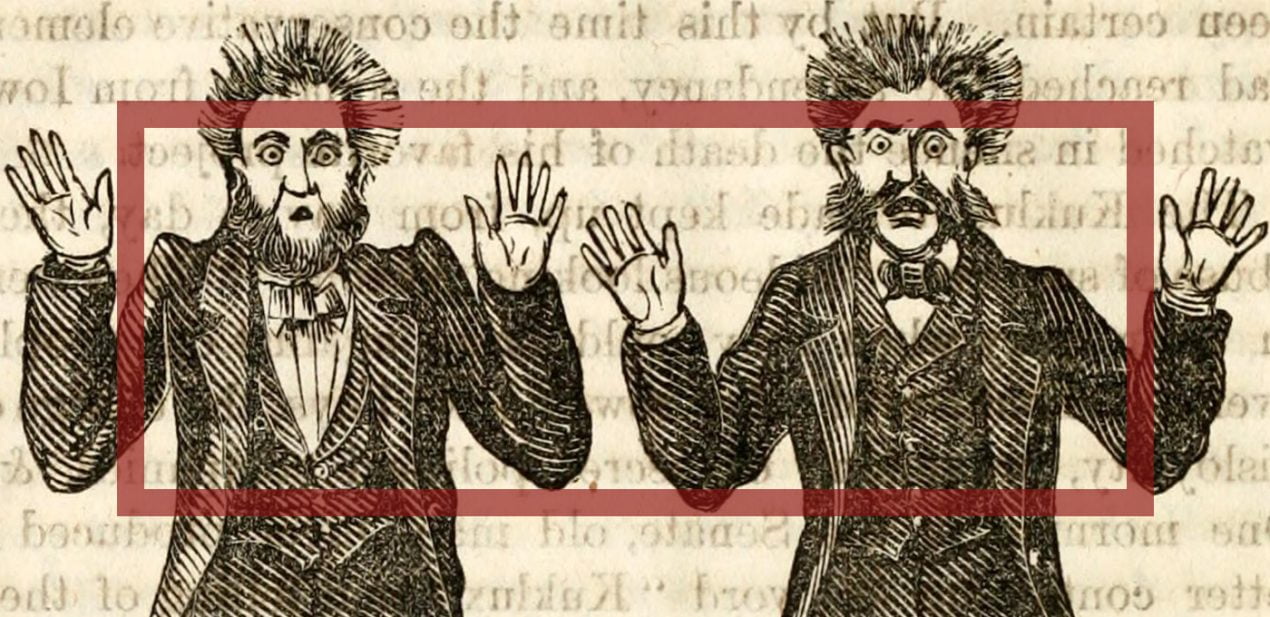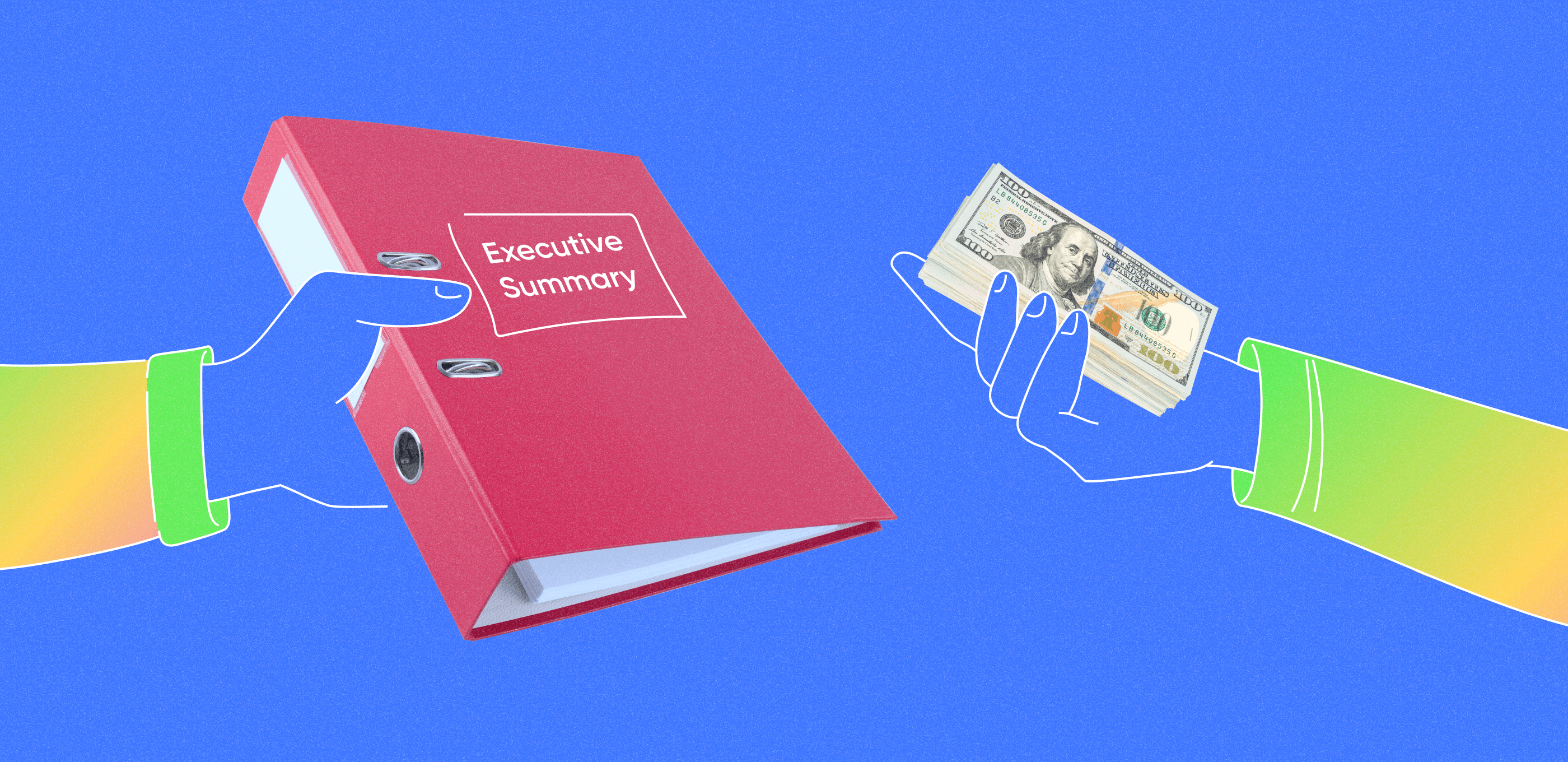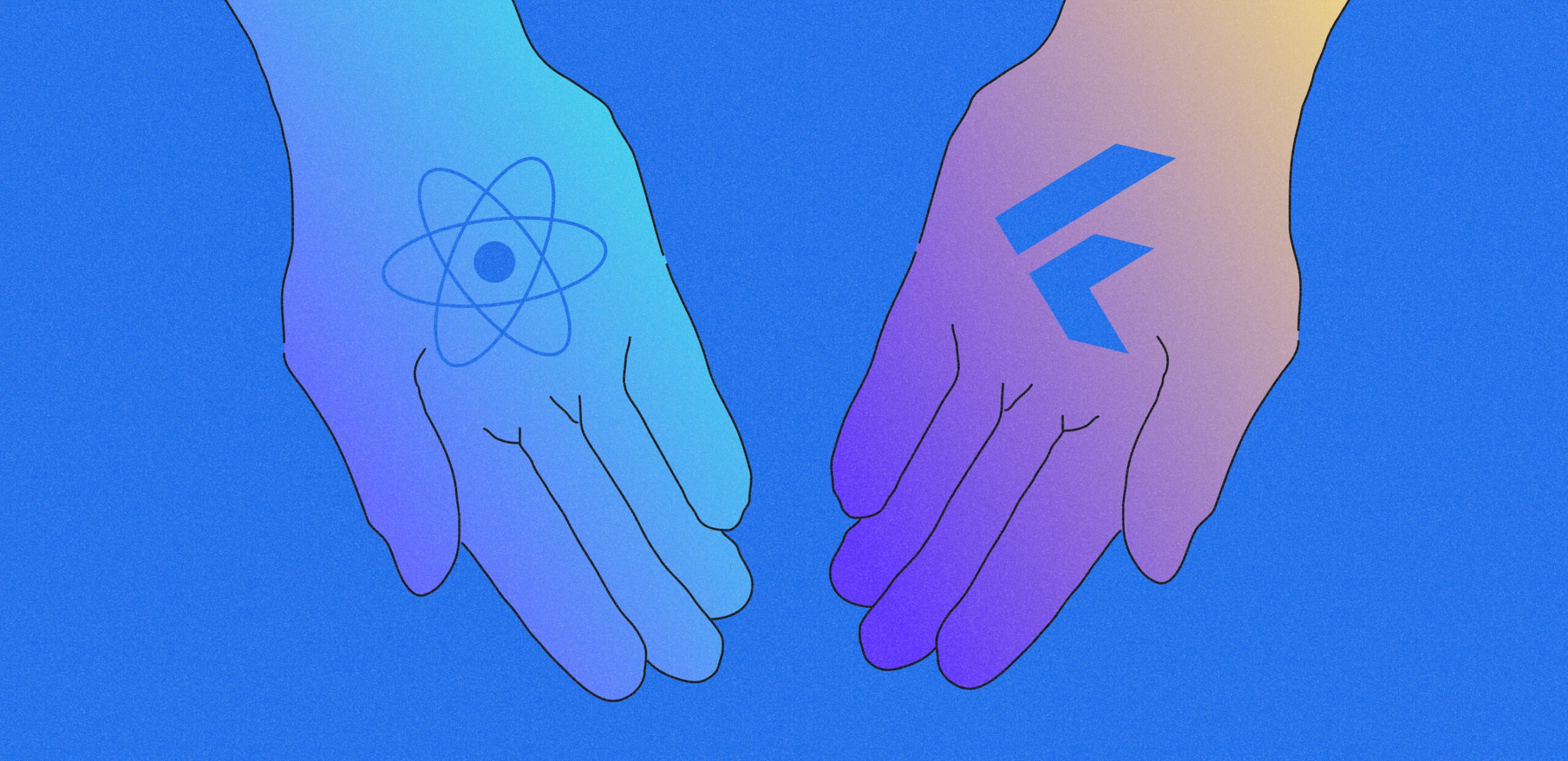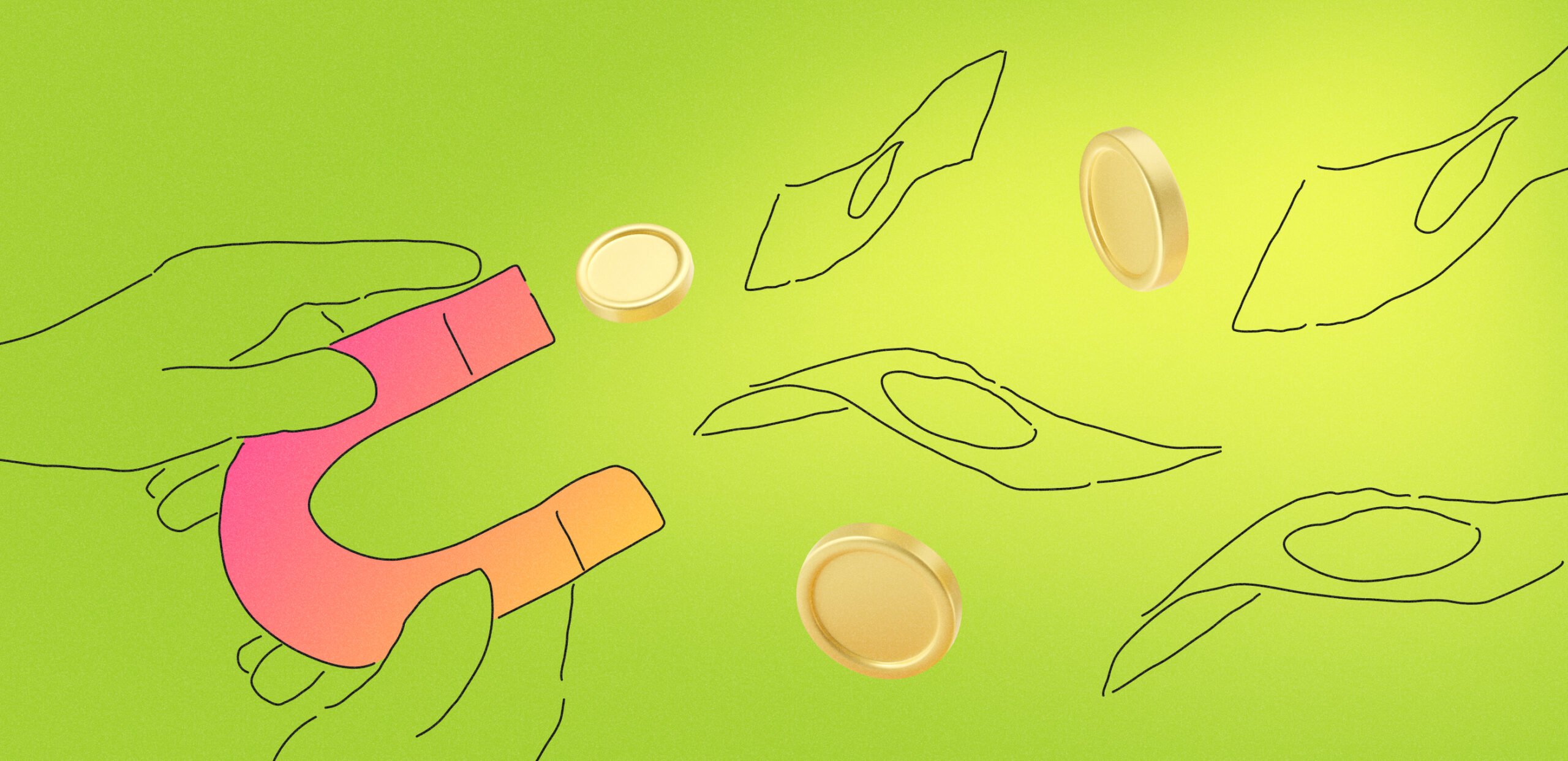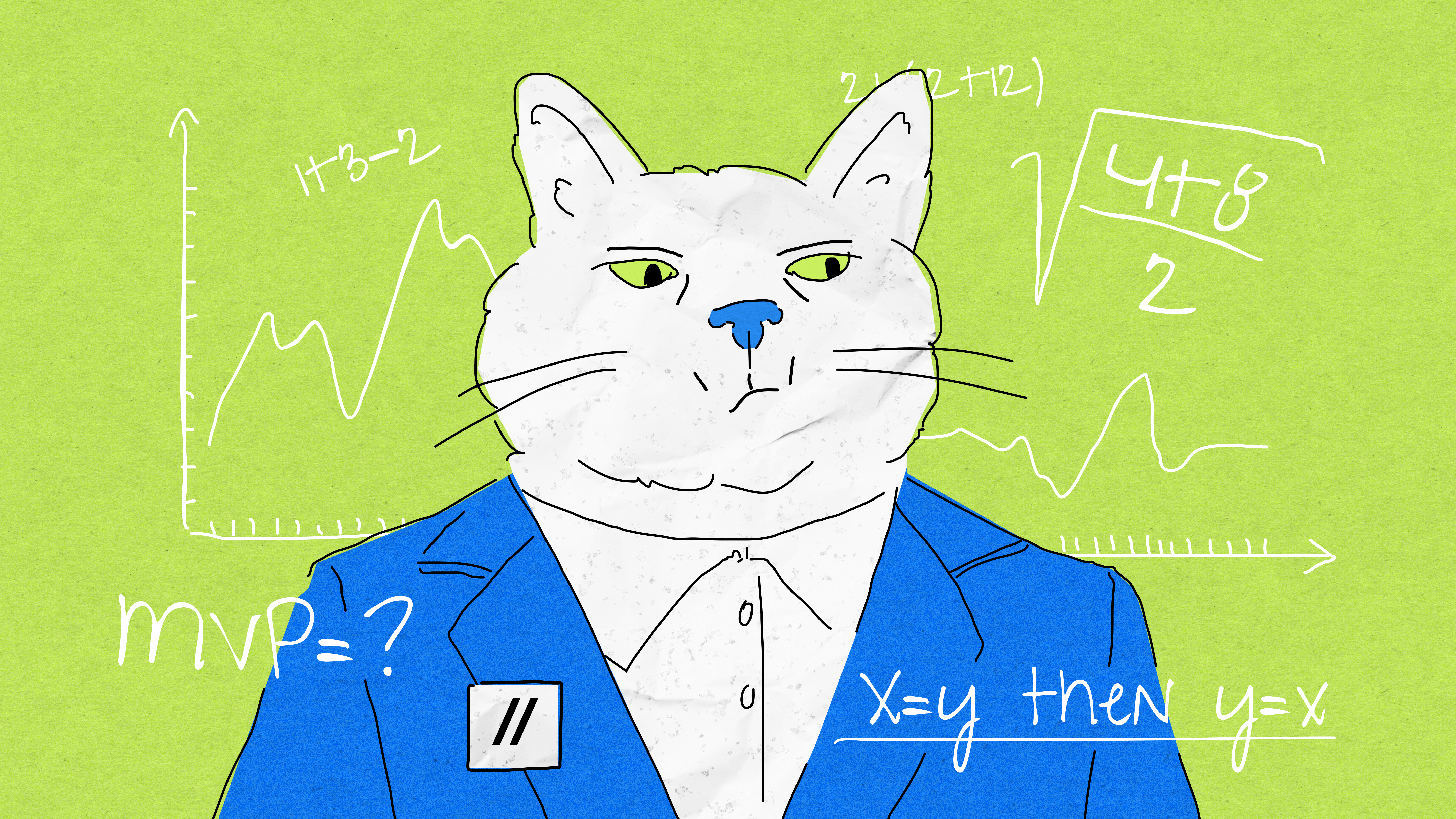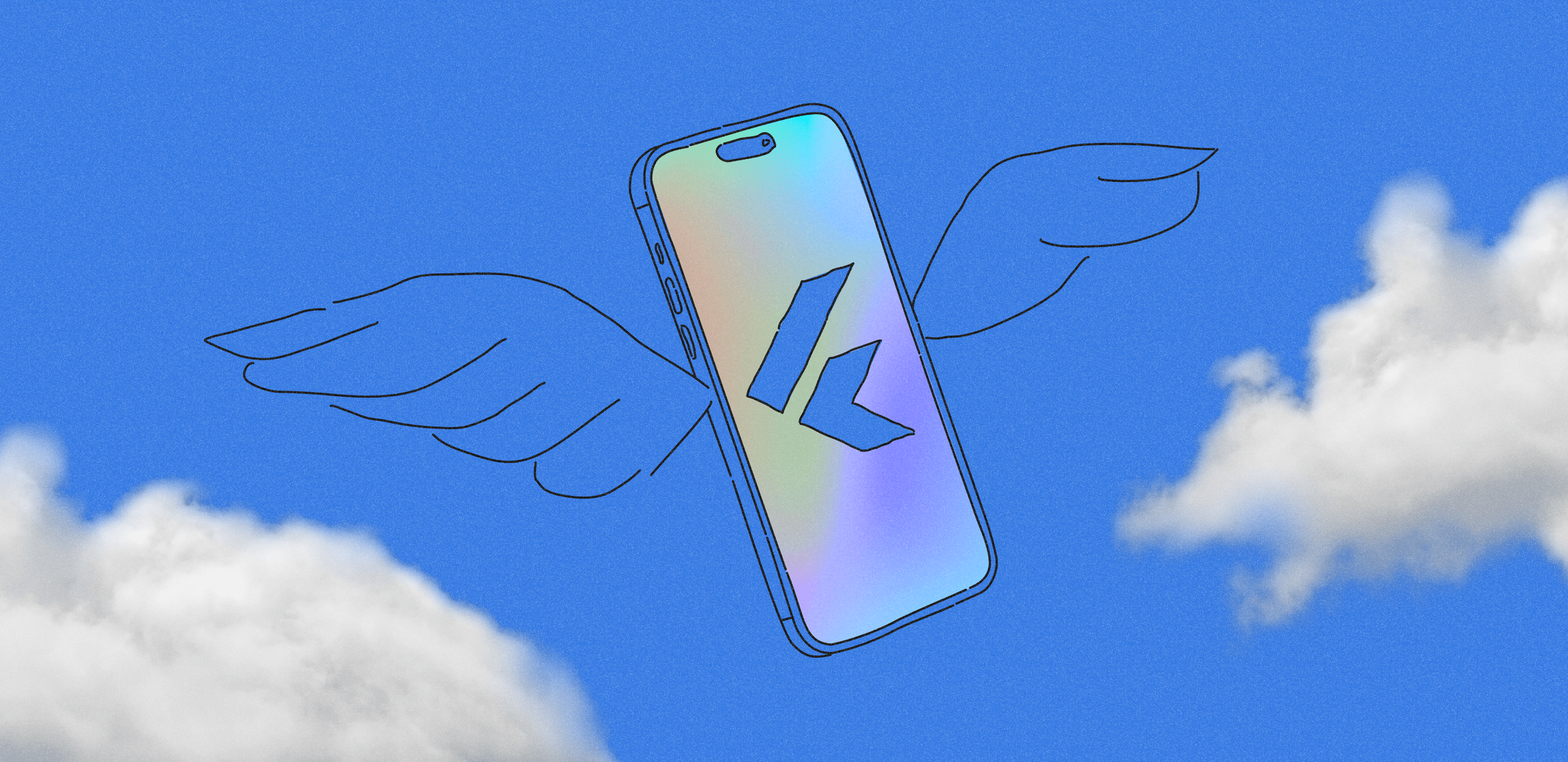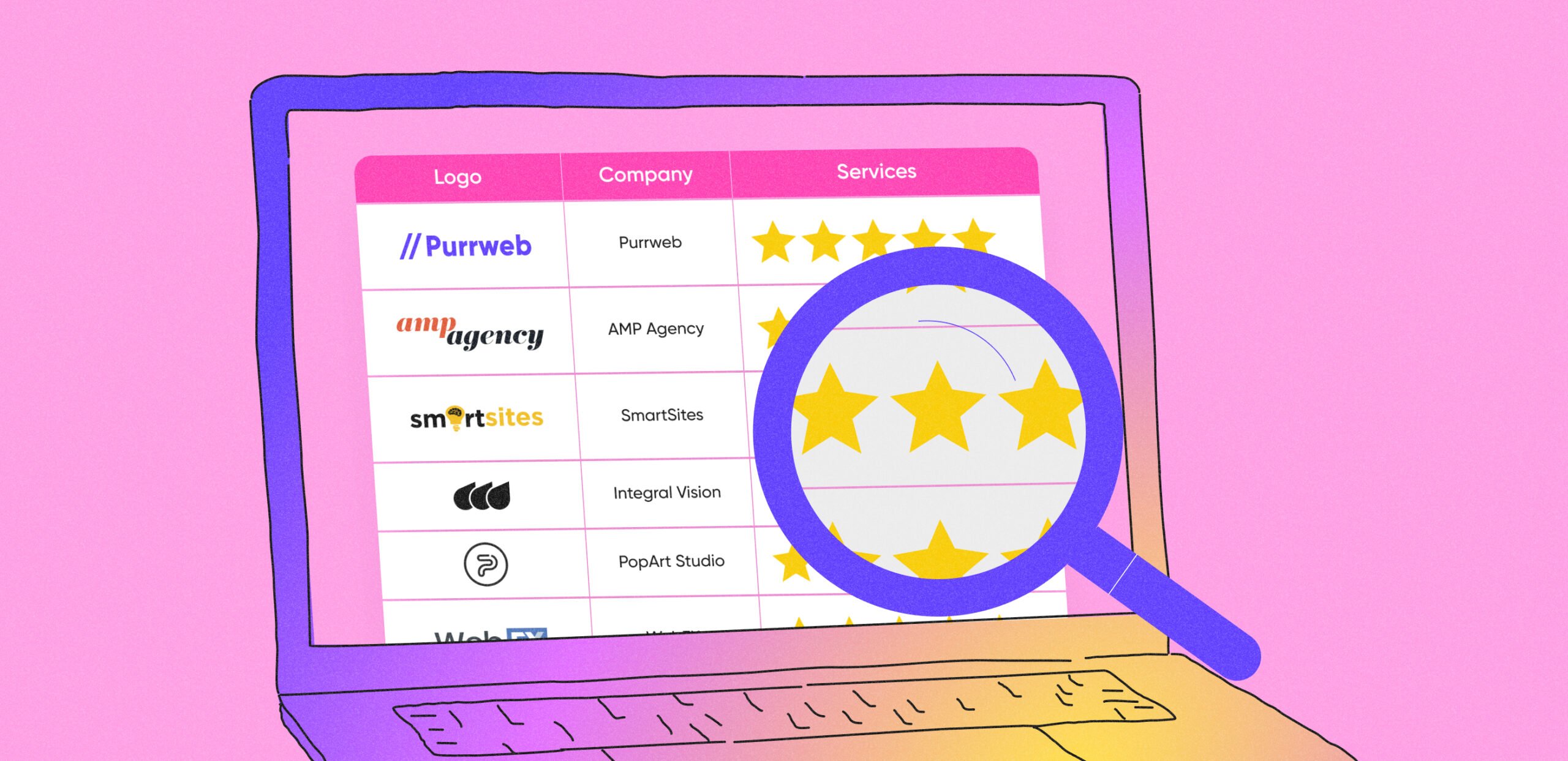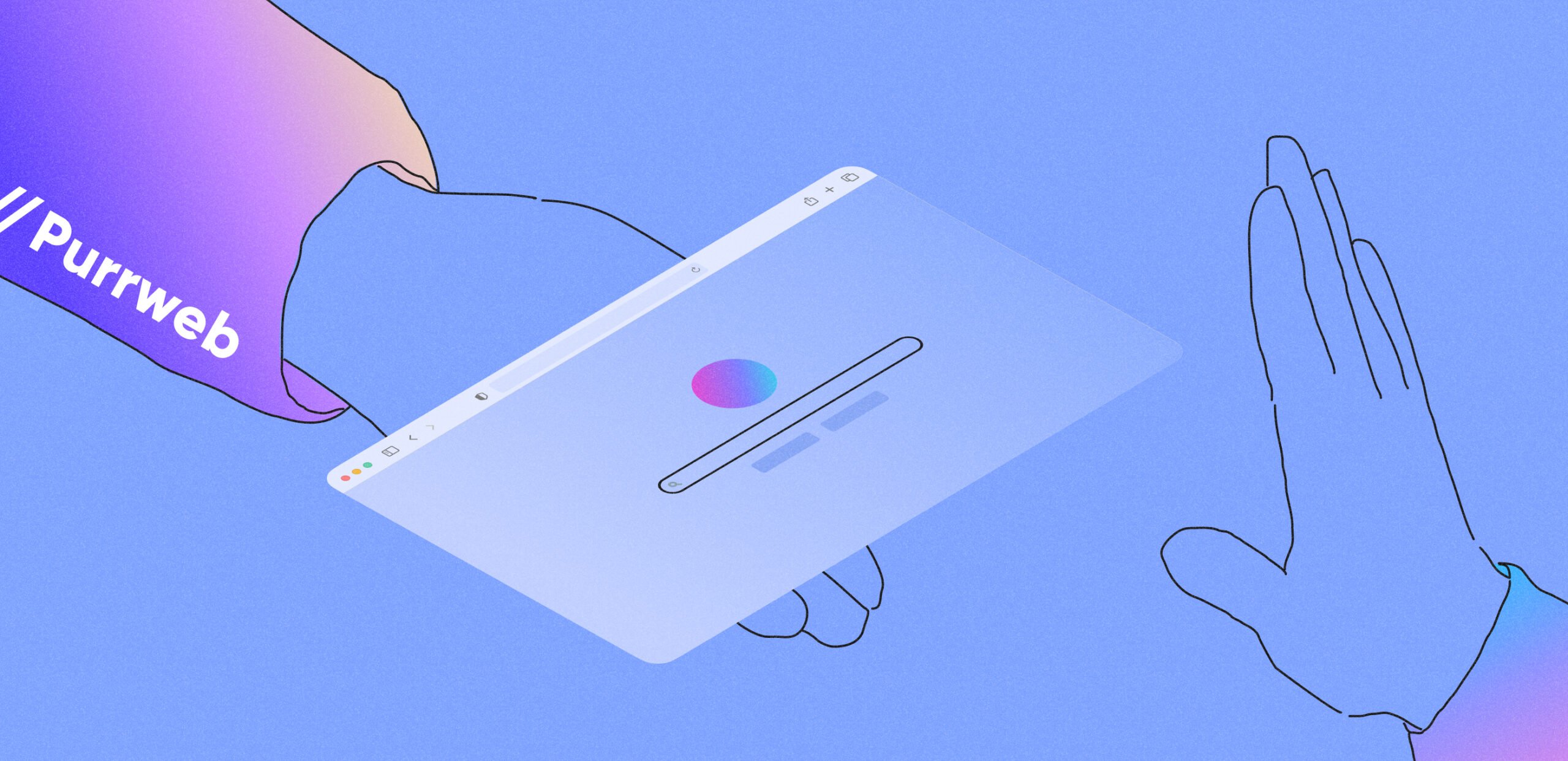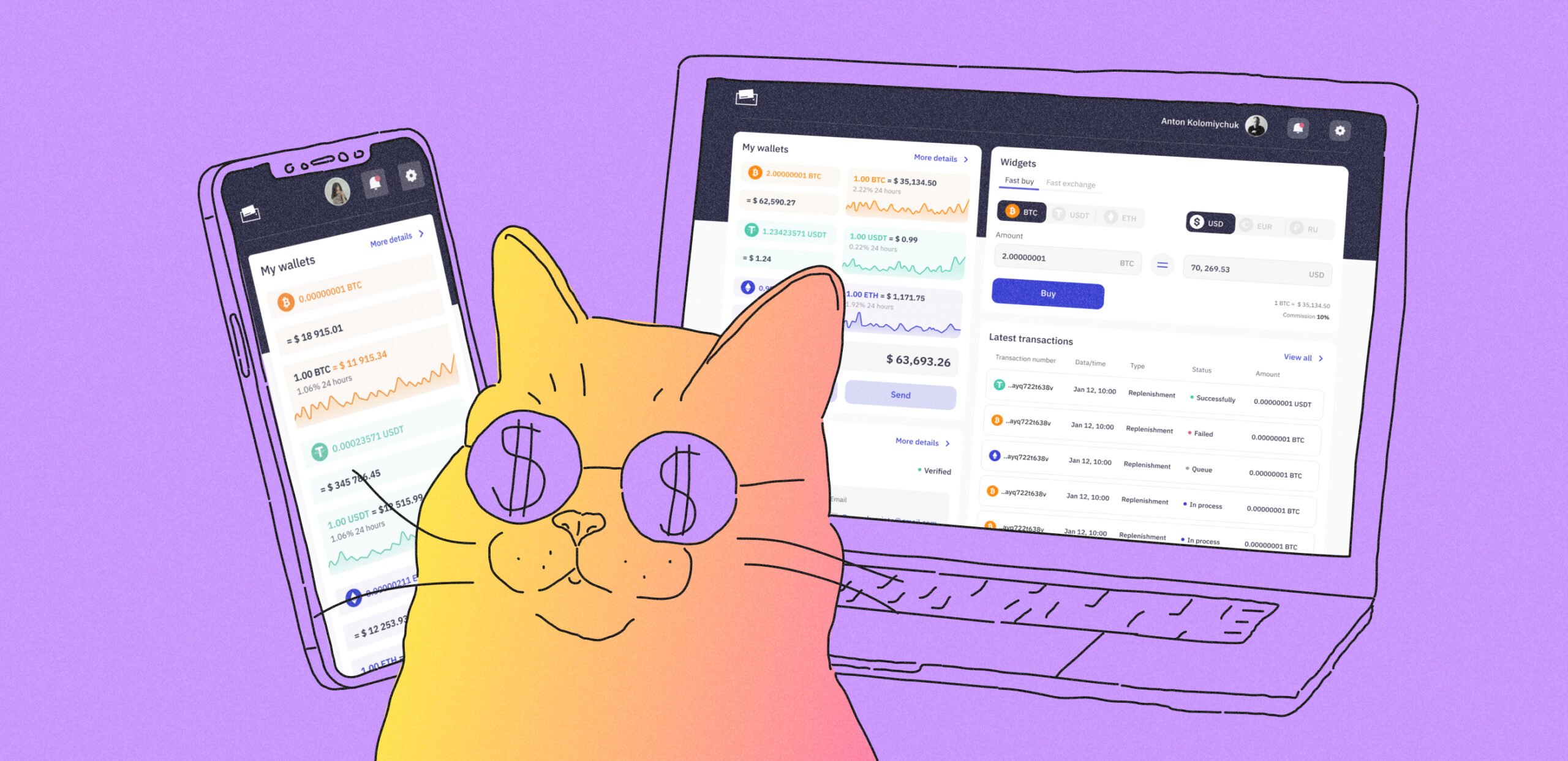Managing projects isn’t about preparing presale docs or moving Trello cards. It’s always about people, their expectations and pain points. To avoid project failure, it’s crucial to understand other people. At least at some level.
Unlike clothes, clients don’t have care labels (and that’s a pity). To boost trust and work effectively together, you need to find the right approach — it varies depending on whom you work with. One is like denim — robust and thick, another one is like silk — requires special care.
In this article, I’ll share some thoughts on how to get on the same wavelength as clients (and, along with that, be cheerful and friendly). Go ahead and figure this out!
Tools
There’s no exact instruction saying something like ‘Do this and you’ll get this’. Although, it’s possible to make life easier (for both clients and project teams) and streamline work processes (crucial in case you manage several projects).
A few tools that are worth highlighting:
1. Daily reports
What is a daily report? Let me explain this with an example:
Say, you pledge to lose 20 pounds. Fast weight loss almost never happens — it’s possible only if you eat nothing and just drink water (a very bad strategy, btw). To feel progress right from the start, you break down ONE LARGE GOAL into manageable micro-goals and track everything you did: ran 3 km, ate a piece of cake (not the whole cake). These ‘tiny’ successes make you feel good and help to move towards something big.
The same approach works for projects. Product development takes a long time. Without understanding what’s happening on the ‘micro-level’, the client starts worrying and doubting. You can alleviate this pain by sending daily reports i.e updates on progress.
2. Planning
It’s a common case when clients ask for something barely realistic. It might be something like “I’d love to have a big red circle, that is green inside and actually looks like a square!” Be it ‘just a wish’ or something meaningful and real, you need to get to the point, split the potential work into understandable tasks and then discuss them all with your teammates.
Once you’ve discussed the tasks with the team, it’s time to form a sprint (the amount of work to get done within 2 weeks). Actually, the sprint length may vary — you and the client should determine the most optimal sprint duration beforehand. This way, you come to a good understanding of who is going to work on a project and what outcome is expected at the end of a sprint.
3. Call-planning
Before calling the client, it’s crucial to get prepared. For me, the best approach is writing down all the tasks and issues I want to discuss. It helps me work out tricky questions, stay to the point and construct convincing arguments during the conversation.
What is the best way to write a call plan? It entirely depends on you. In fact, it might be whatever you’re comfortable to use.
4. Call-summary
Client meetings are mainly about agreements. The most important thing here is making sure that everyone’s on the same page. Aligned tasks and priorities define work success, so this is of primary importance.
Writing a call-summary allows me to sum up questions that we’ve already discussed and agreements we’ve already made. While talking to the client I happen to produce a very rough draft.
 I never send THIS to clients 😀
I never send THIS to clients 😀
Once the meeting is over, these ‘rough drafts’ become a clear action plan. Messy words and phrases turn into answers for ‘What have you discussed?”, “What are you going to do next?”, “How much time do we have?”, “Within what budget?” and so on.
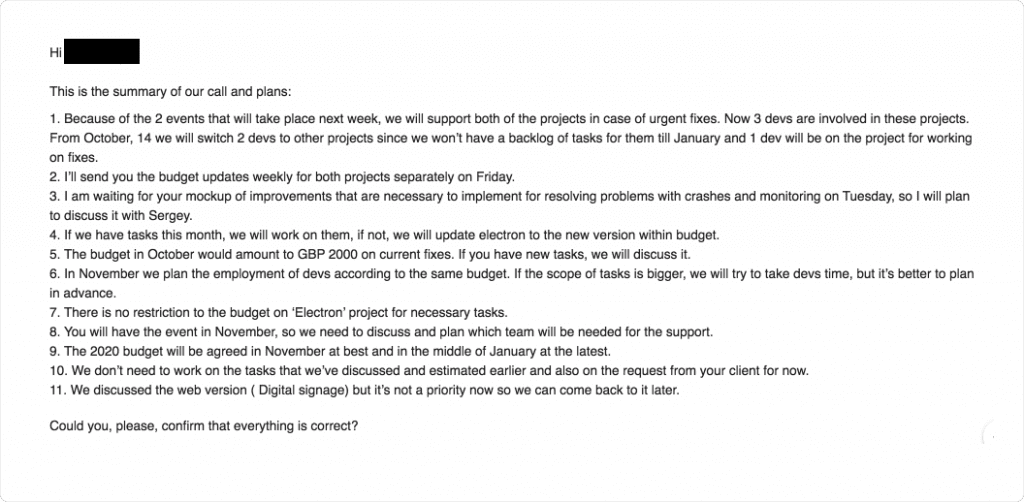 After the call clients get THIS. The main goal is to ensure that everything is okay and they agree to all stated goals
After the call clients get THIS. The main goal is to ensure that everything is okay and they agree to all stated goals
If you don’t use these tools and techniques (call them whatever you want), what will happen? I guess, nothing. Probably, a bit of chaos and lots of questions — or not, depends on your luck. This list of ‘helpful stuff’ isn’t a pill for every disease, it’s just a way to control project chaos. It is based solely on my own experience — for you, this may work in an entirely different way.
Clients in product building
The choice of tools mainly depends on the person you work with. What is his character? Pain points? ? Let me share a few portraits of clients I happened to work with:
1. “I have a technical background”
This is usually a detail-oriented analyst. Thorough, meticulous. To the point and rational. He loves formalities. Focused not only on the outcome but also on the process: how this or that works at every single stage.
 This is how ideas might be received. Schemes, arrows — everything is stupidly clear
This is how ideas might be received. Schemes, arrows — everything is stupidly clear
Once the project is launched, clients happen to starve for details. The difference is that analysts ask for a bit more details. To share details on a regular basis, you can try daily-reports.
How do I plan meetings with analysts? Suggest time slots, then receive an approval (seeking for other options if the time doesn’t fit) and send a Google Calendar invite.
 No surprises at all — such people prefer sticking to the plan
No surprises at all — such people prefer sticking to the plan
Being a critic and a doubter, analyst usually takes ‘think’ time. My primary goal here is to bring him back to reality project work.
Seems that such a client might be the hell for every project manager. However, all these ‘dreadful’ qualities are strengths.
For project work, analyst means:
- Detailed and well-structured comments that are easy to put into work.
- Understanding the final outcome.
- Being to the point during calls.
- No-delay meetings.
- Compliance with agreements.
2. “Cool hairstyle! What’s new?”
Client who is like a friend. Communicative, very emotional. Working with such a client, both the project work or holiday plans can be discussed.
 Tons of emojis and emotions, see?
Tons of emojis and emotions, see?
 This is what a design specification can be like. And this is totally okay
This is what a design specification can be like. And this is totally okay
Chatty clients aren’t just about ‘Need all the details about what you did last weekend!” Project-related stuff bothers them as much as it bothers analysts.
What about planning? To be honest, it’s not so effective as with analysts (delays are common). Sometimes it’s better to NOT BUILD PLANS and just suggest something like ‘How about having a call in 10 minutes?’ — expect the same in return.
And what about daily reports? It’s rather optional than mandatory. If you don’t write one, the client won’t even notice that.
 Regular progress reports and good performance without delays — that’s what important
Regular progress reports and good performance without delays — that’s what important
Chatty clients allow project managers to solve issues without wasting time and energy on formalities. You can ask ‘silly’ questions with no fear to look like an idiot. And the client can do exactly the same.
3. Need it ASAP. Have an investor pitch tomorrow
This client is outcome-oriented and extremely persistent right from the start. Firmly believes that his № 1 priority has exactly the same level of importance for everyone else. When it comes to project-related issues, this client either finds whoever he needs to solve them or does it by himself.
 Let’s manage all the issues. ASAP
Let’s manage all the issues. ASAP
Working with such a client means lots of daily conversations. Need to talk? — Yes, please, right now. No scheduling at all — let’s talk ASAP. Dialogs are usually relaxed, with jokes and emotions — everyday conversations generally bring people closer together:)
Such clients are great for project work! Yes, you have to constantly explain timelines and human capacities, however:
- No need to bombard the client with non-stop follow-up messages to get a meaningful response.
- No pauses for ‘thinking’ and ‘getting things aligned’. The client gets the result, shares feedback and then just goes ahead.
What it is all about
So, here are three types of clients you may come across — in fact, there are many more. One is deadly serious and uncompromising, another it chatty and flexible. Is it possible to just divide all the clients into very specific groups? Of course, not. Although, you can love them all. Simply because working with different people is a good way to eliminate boredom and become more resilient.
And yes, I should have created a table with different client types and best suitable tools, but I didn’t. Simply because project work is not about TYPES. Everything boils down to people. Always.

